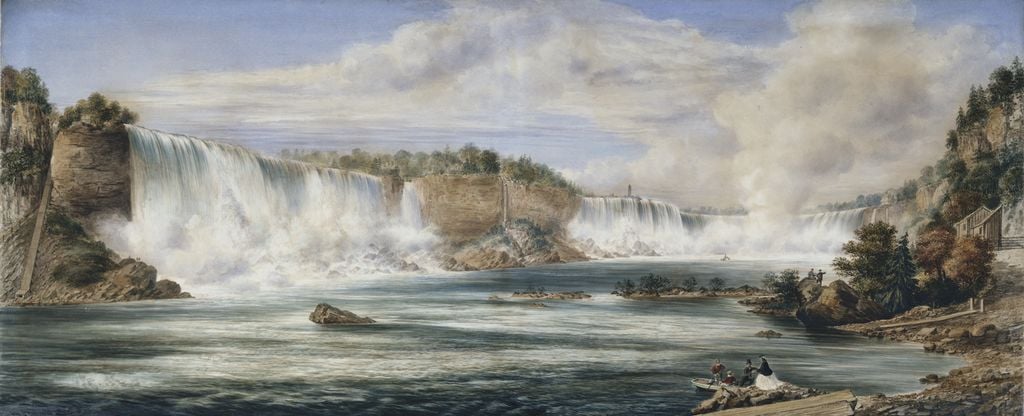
Canada
Explore The Royal Family's close relationship with the region, as well as the diverse artistic traditions represented in the Royal Collection
Quebec from Point Lévis
Signed and dated 1881Oil on canvas | 56.1 x 112.0 cm (support, canvas/panel/stretcher external) | RCIN 404834
According to a critic in The Globe newspaper in 1881 the painting depicts 'a very comprehensive view' of Quebec on a warm autumn afternoon from the south shore of the St Lawrence River near the eastern end of Point Lévis. The view takes in the citadel on the top of Cape Diamond, the city of Quebec with the new Dufferin Terrace, Laval University and the Grand Battery. On the right of the picture is the eastern end of the lower town, St Roch's and the harbour. Another enthusiastic critic saw the painting as having a strong symbolic meaning, showing Quebec 'not … as a barrier but as a great gateway, opening on to a continental empire'.
O'Brien was a civil engineer and did not begin to paint seriously until 1872 at the age of forty. His manner of painting reflects the influence of the American Luminist School, in particular the work of Albert Bierstadt, who visited Canada on several occasions and whom O'Brien knew well. O'Brien was active in establishing of some of Canada's first arts societies, including the Ontario Society of Artists, of which he was a founder-member and later president. He was also a founder-member of the Royal Canadian Academy and its first president from 1880 to 1890. He was art editor of a two-volume travel-book of engravings - Picturesque Canada: The Country as it Was and Is (Toronto: 1882) and was responsible for sending artists to all parts of Canada to prepare sketches for the publication, the first of its kind in Canada.
Signed and dated: 'Quebec – / L.R. O'Brien – / 1881 – .'







